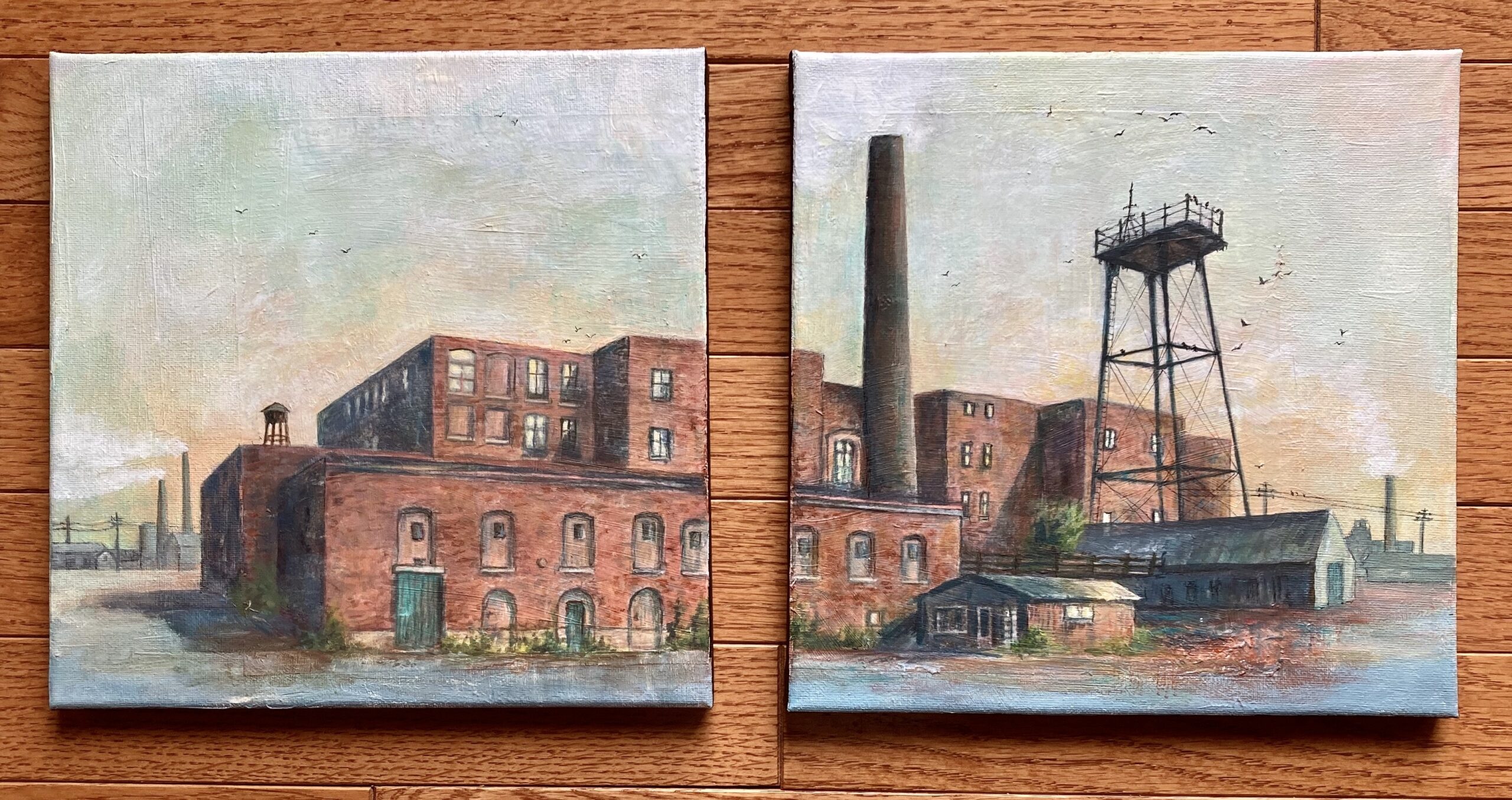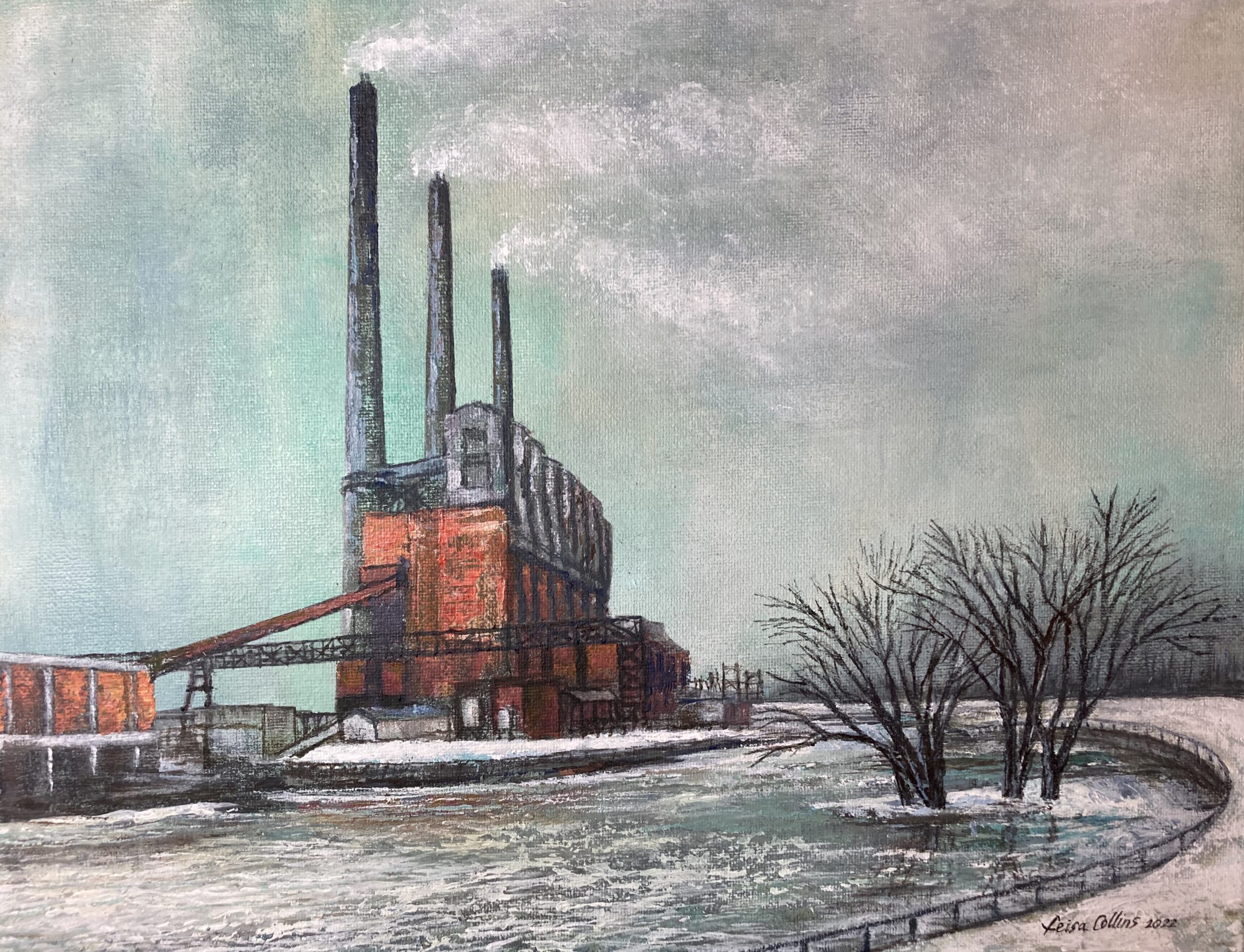The Rugged Beauty of Industrial Architecture
As I travel across the country — whether through cities or out in the wilderness — I am becoming increasingly aware of the remnants of America’s industrial architecture and have been inspired by the rugged beauty of their forms. After all, at the root of this country’s progress over the last two centuries, were the factories built to produce needed goods – from the finest linens to firearms — for a rapidly growing nation.
I have just completed the first three paintings in this series. As you can see, the technique I use is a far cry from the fine detailed pen and watercolors of my signature house portraits, Iconic American Architecture series and more.
This first pair of original paintings evolved from various industrial images I viewed in my travels, combined with my imagination. I decided to start small and used these to experiment with technique and materials. Each canvas is 10 x 10 inches.
These paintings are mix of acrylic paint and other mediums to give the paintings a more textured industrial flavor. I have to admit, it has been fun to throw aside my fine pens and brushes and roll up my sleeves for a change, just as one might in the industrial factories in years long past.

Eckert Power Station, Lansing, Michigan
After completing this pair, I decided to look for inspiration closer to home. Lansing, Michigan, my current, if only temporary abode, has long been a city of industry and commerce. My next subject is close to Lansing’s downtown and its towering iconic smokestacks can be seen for miles. The Eckert Power Station was retired from service just last year and many are now wondering what is next for the huge structure. There has been talk of it being repurposed for residential use or office space.

The power station’s right to retire came nearly 100 years after the plant opened, when workers began loading coal into furnaces to create steam for electricity to power the city.
The Eckert Power Station General Manager Dick Peffley, recently explained in the media how the building served two purposes. “It was a generating station which made electricity but it’s other function it was a substation that took electricity and distributed it through our service area.”
Saving Industrial Sites
In the 18th century, the industrial revolution was burgeoning to meet the needs of a rapidly growing population. The steam engine, mechanized textile loom and electricity were but a few of the inventions that permanently changed American society.
Like so many homes and institutional buildings across the nation, many early industrial infrastructures became victims of the wrecking ball. Others were abandoned.
The good news is that today there is a growing interest in preserving and restoring these sturdy structures. Indeed, some are now being recognized as important landmarks of American history and are now part of the National Historic Sites or Landmarks.
The Society for Industrial Archaeology, (SIA) is one organization that is working to help preserve the nation’s industrial heritage by protecting and salvaging important manufacturing sites. “Such sites not only illustrate America’s former manufacturing way of life,” says SIA’s Executive Secretary Steven A. Walton in a recent article. “They also tell us stories about the toils of our own ancestors and how their work made us what we are today.”
Walton, who also serves as a history professor at Michigan Technological University, adds that these old factories can provide us a better understanding of production. “Even in a gutted factory,” he says, “bolts and stains and tracks on the floor, conveyors and overhead cranes reflect the division of labor — of thousands of people working in a coordinated symphony.”
There is also a growing trend to create guided tours of abandoned factories and industrial sites so they are open to the public for exploration. This is helping to create greater awareness of their importance to the history of our industrial development.
I will have to add some of these tours to my list!
Cheers,
Leisa


